What is no-code? Creating No-Code applications
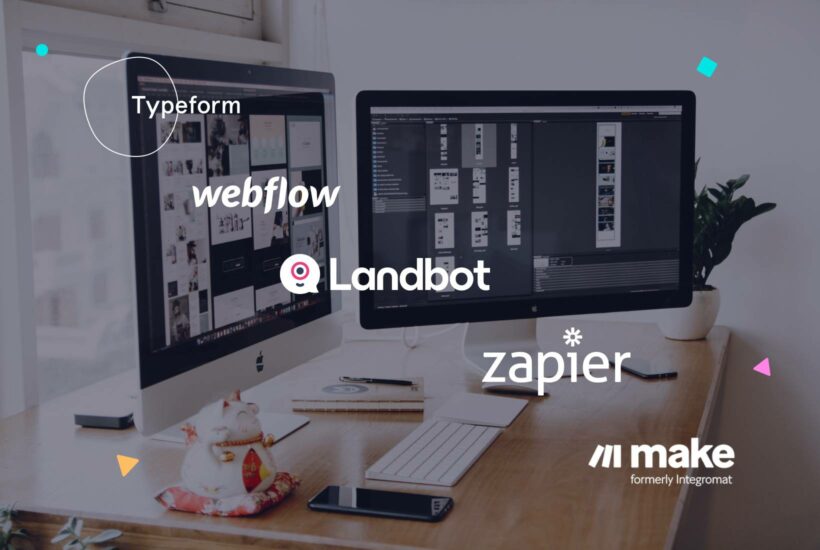
Today we have two situations in the tech world. Companies and professionals need quick solutions to solve specific problems or to optimise their processes and the cost of IT profiles is increasingly high due to the high demand that this causes.
No-code has thus become the ideal response to this type of need, making it possible to build applications or systems without technical knowledge and skills being a barrier.
In the Modular team, despite being formed mainly by programmers, we love the no-code world and the possibilities it represents for all kinds of projects.
We also love discovering and testing the increasing number of tools and platforms available on the market to develop applications without having to use code.
But let’s start at the beginning.
Tabla de contenidos
What is no-code
No-code encompasses a number of platforms and applications that are used to create custom software solutions to solve digitisation problems without the need to write code.
As the name suggests, no-code allows you to create programs, mobile apps, websites or high-level automations without writing a single line of code (unlike traditional programming).
Shopify or WordPress itself are good examples of this type of no-code tools, with which anyone can build a website or online shop with almost no technical knowledge.
What is the origin of no-code
Although it may seem a modern and innovative term, the no-code movement has been with us for a long time. Let’s review, as if we were back in high school, the history.
Inspired by the book “Application Development without Programmers” by computer scientist James Martin, some software developers started working on the idea of developing systems for creating applications without writing code (like IBM itself) back in 1982. We were not even in our parents’ minds yet.
During the 1990s, applications began to appear that took this concept and made it easier for users without programming knowledge to develop customised solutions. Examples of this type of application are Microsoft’s Excel (considered by many to be the most widely used no-code application in the world) or its Visual Basic programming language (where many elements such as buttons or windows could be created without writing a single line of code).
From the year 2000 onwards, no-code started to gain momentum and many of these no-code development tools became popular. WordPress, our beloved WordPress, is perhaps the clearest example of the evolution of this type of development platforms, allowing today to create a professional website without having to know how to handle web technologies such as HTML, CSS, PHP or JavaScript.
Today, no-code is considered one of the most important trends in the world of software development and digital marketing as well as a great alternative for any entrepreneur to develop their idea on the internet without having to have a technical profile.
What the no-code is for
The goal of no-code is simple and consists of being able to create a software application to solve a problem without having to write code. It can be a complex application or a simple solution to a specific task, as no-code development is focused on any type of software solution.
What is the difference between no-code and low-code?
As in everything in life, there are levels here too.
Low-code is an approach to development where software solutions are created using a minimum of code, using tools that facilitate and automate the creation of elements and actions to be performed.
No-code goes one step further than low-code and completely eliminates code from the development process.
What are the best no-code tools?
There is currently a wide range of no-code solutions on the market to create applications, apps and websites quickly and efficiently, without having to resort to traditional code programming.
Below, we are going to make a compilation of some of the best known and currently used ones:
1. Make – Previously Integromat
This tool is ideal for automating processes and tasks in a very short time. It is commonly used in companies to connect different applications or solutions and make the flow of information much faster and more efficient.
With Make, more than 650 applications and APIs can be interconnected, with a very simple system that only requires dragging and dropping.
Cost: Free plan and paid upgrades.
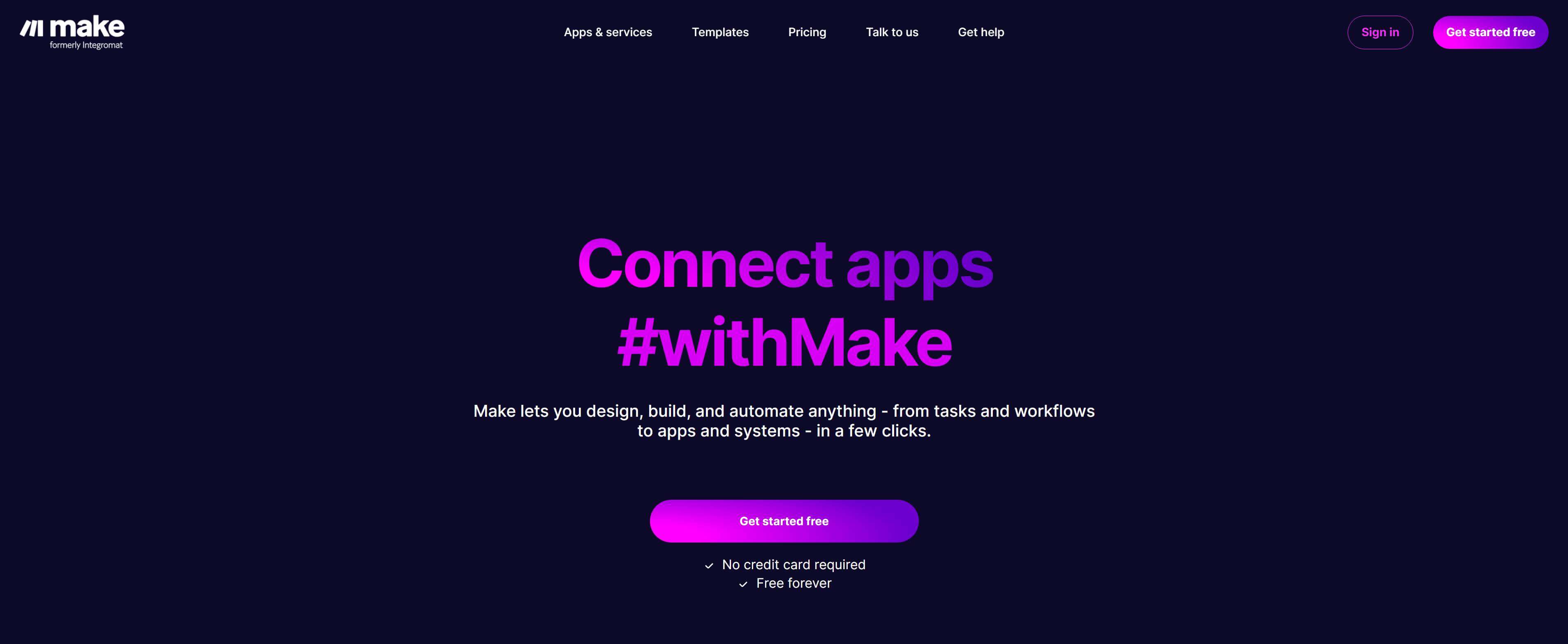
2. Zapier
A competitor of Make, Zapier also allows for the integration of software and web applications to perform data exchanges. It is widely used by digital marketers to transfer data from web platforms such as Google Calendar or Facebook Ads to the marketing automation tools they use.
For example, with Zapier, when you receive an email with an attachment you can add it directly to your Dropbox and receive a Slack message with the Dropbox link to view the file.
Cost: Free plan and paid upgrades.
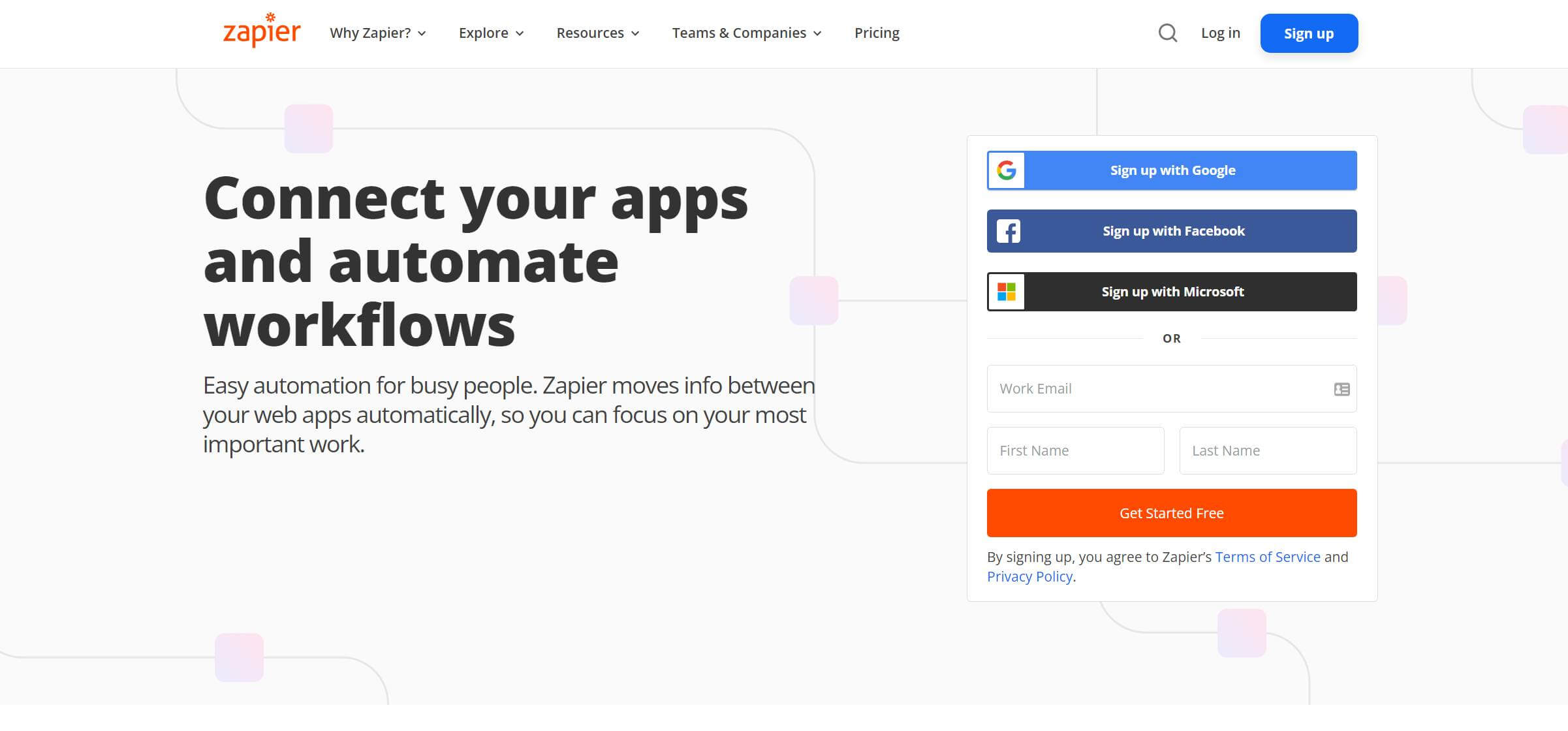
3. Landbot
Online chats have become a fundamental tool for improving customer service as they allow personalised and immediate responses regardless of when the user requests them. 24/7 and 365 days a week. That we humans need to sleep and we can’t do it.
Landbot is a tool for creating bots that you can embed in your website so that your users can contact you and resolve their queries quickly, thus increasing your retention and conversion.
Cost: Free plan and paid upgrades.
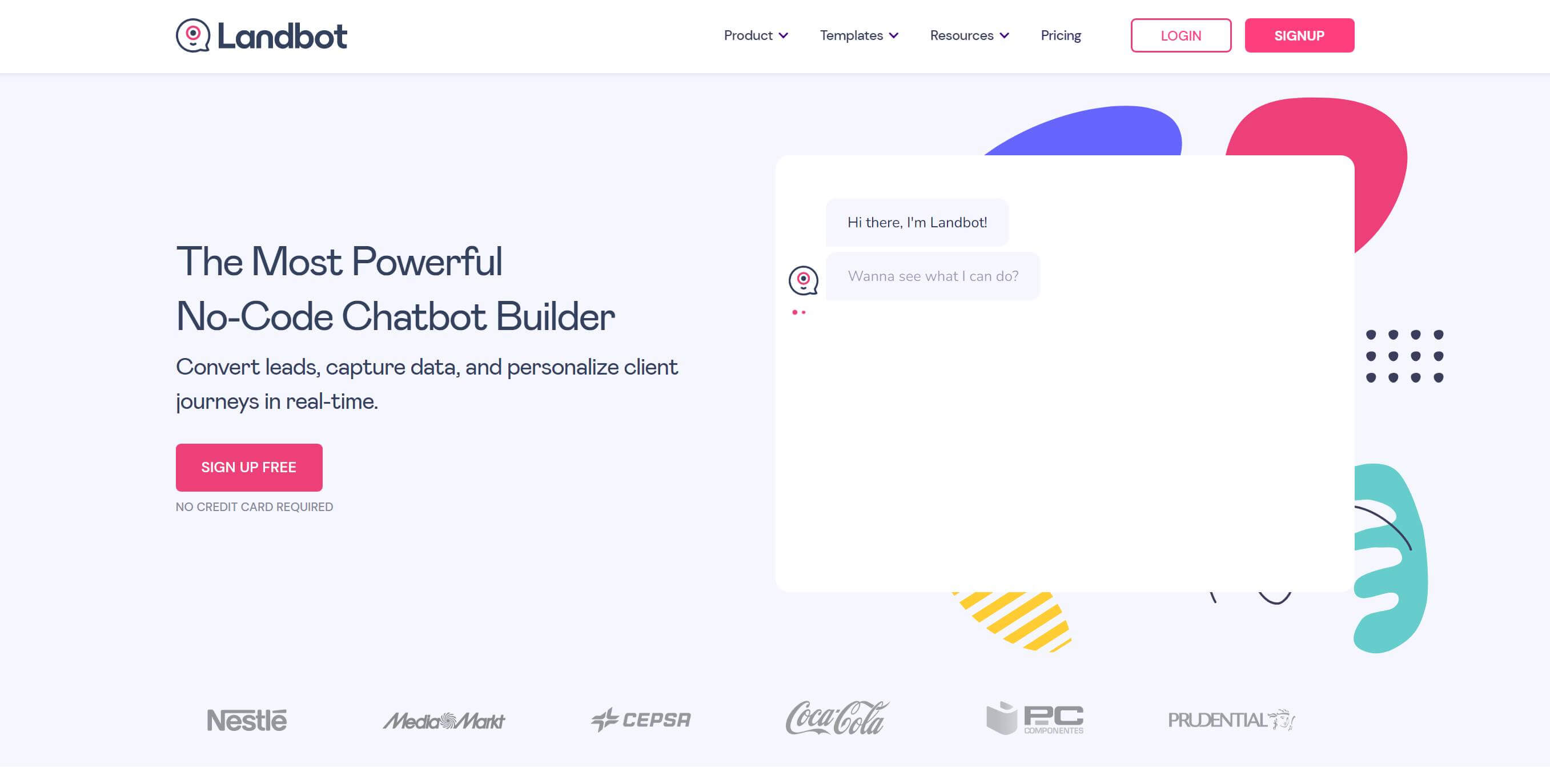
4. Webflow
It is one of the best no-code platforms for the design and development of websites. This CMS has a very powerful visual builder that efficiently converts all the development work into the corresponding HTML, CSS and JavaScript code necessary to be able to publish the website on the server.
A very interesting point of Webflow is the ease with which different people can participate simultaneously in the construction of a web project.
It is true that it is very much designed for professional designers and that its learning curve is important, despite not needing knowledge of code…
Cost: Free plan and paid upgrades.

5. Typeform
The best known of the Spanish no-code tools with which the creation of forms with which to obtain information from your customers or leads is incredibly easy.
With a super powerful solution that allows you to create forms with different styles, incorporate logic jumps, have super detailed statistics and that also integrates with a lot of applications.
If you use Modular, you’ve probably come across a Typeform form somewhere. We’re big fans.
Cost: Free plan and paid upgrades.
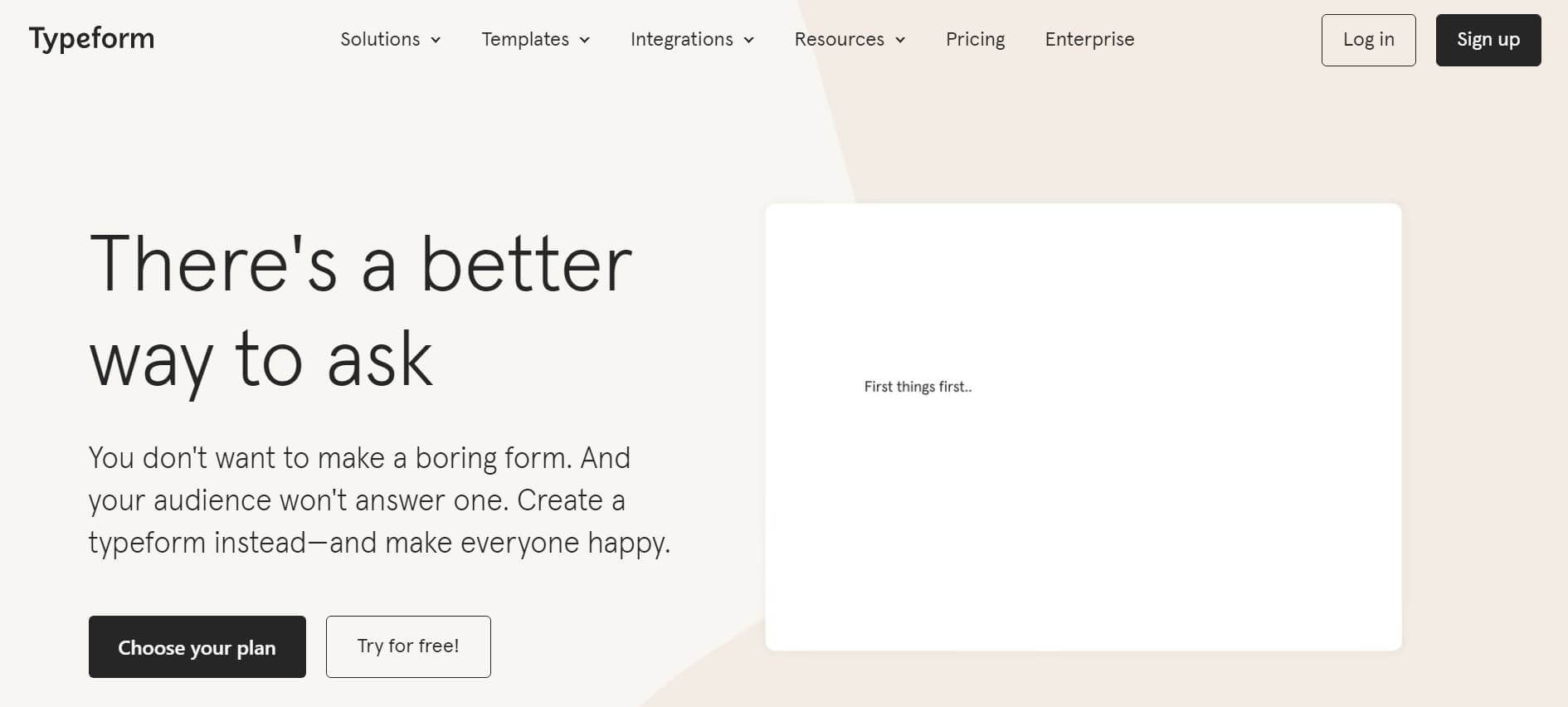
Other non-code platforms
The list of available no-code tools is already very large but it is growing every day, and this movement is being widely accepted by companies and by users themselves.
Other interesting no-code platforms are:
-
- Shopify: For the creation of an online shop in a very simple way so that you can start selling your products very quickly. Includes payment gateways, design templates and reports to control your invoicing.
- Google Analytics: We were not going to forget the great tool to have statistics of your website, app or ecommerce from Google, which is also completely free.
- Notion: As we talked about in our list of apps to improve your productivity as a freelancer Notion allows you to unite in one place many of the day-to-day tasks of a digital business. Team knowledge base, task management, team communication and much more.
- Airtable: To create and manage databases collaboratively without having to know SQL query code. An excel with a twist.
- Mailchimp: The monkey people are the kings of applications for automating bulk emailing and implementing email marketing campaigns. Who hasn’t heard of them?
- Graphext: With this codeless tool, visual graphs and reports can be generated based on intelligent data analytics.
- Bubble: A tool for code-free creation of web pages to mobile applications that is growing rapidly in the United States.
No-code trends
No-code is a movement that is already established and is becoming the inevitable future of programming.
In this digital era, where people and companies are highly dependent on technology and where speed and agility are a priority in a globalised market in which you compete against everyone, developing customised solutions as in the past, by hand, is becoming less and less efficient. Because of the costs and development times involved.
This, added to the fact that no-code solutions are becoming more sophisticated and powerful every day, allowing complex problems to be solved in a very simple way, is leading to more and more users all over the world.
Developing all kinds of applications without the need to be a programmer or to write code is a reality nowadays. And furthermore, in our opinion, this only benefits programmers who are increasingly needed to create these incredible applications that can be used by thousands or millions of people around the world.
And you, are you already taking advantage of the power of no-code?


